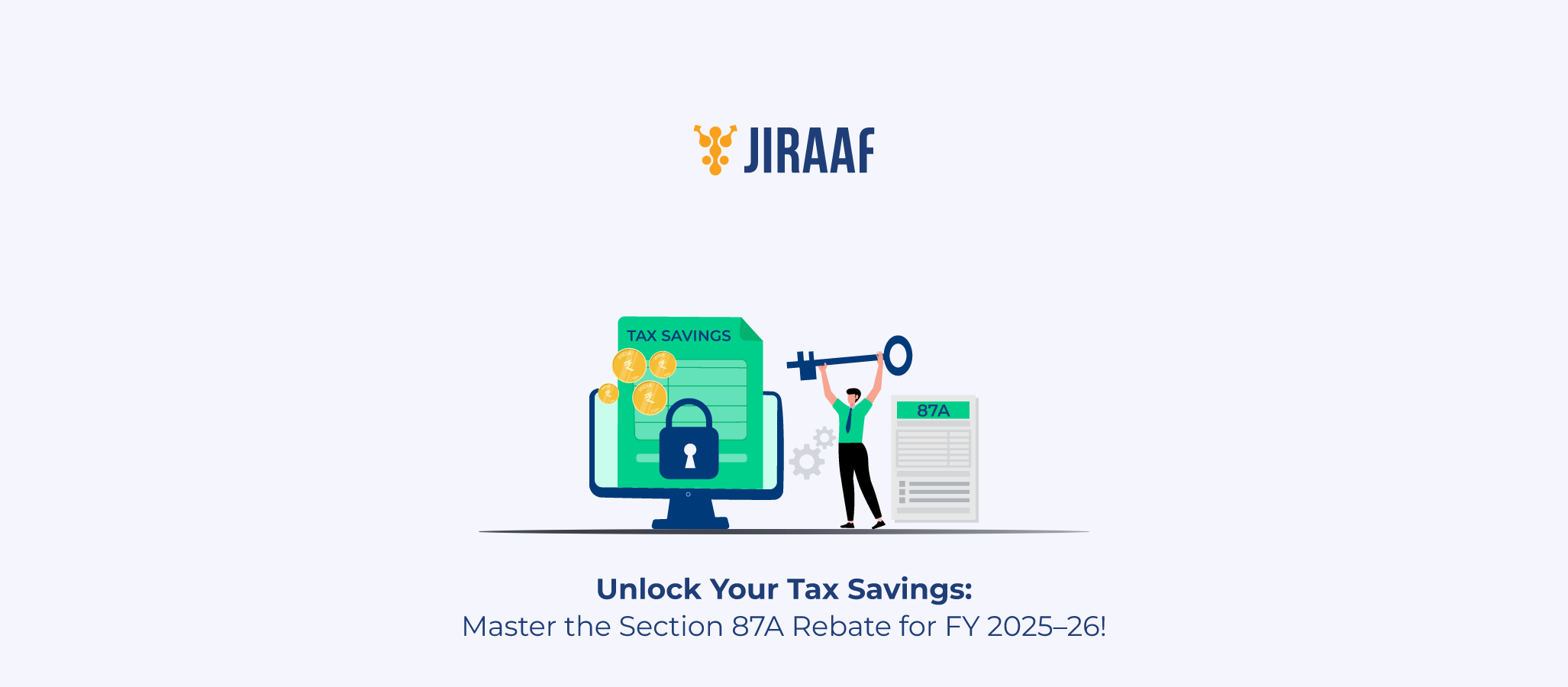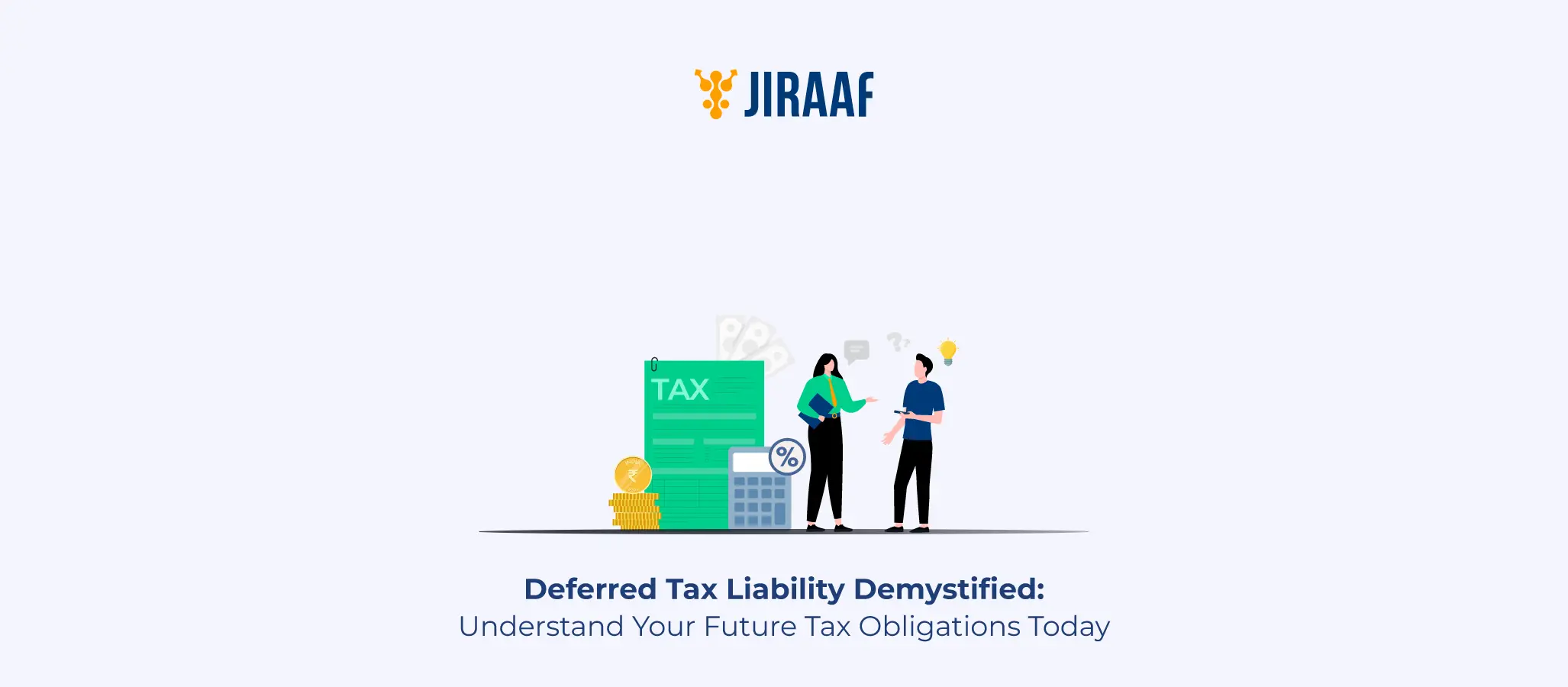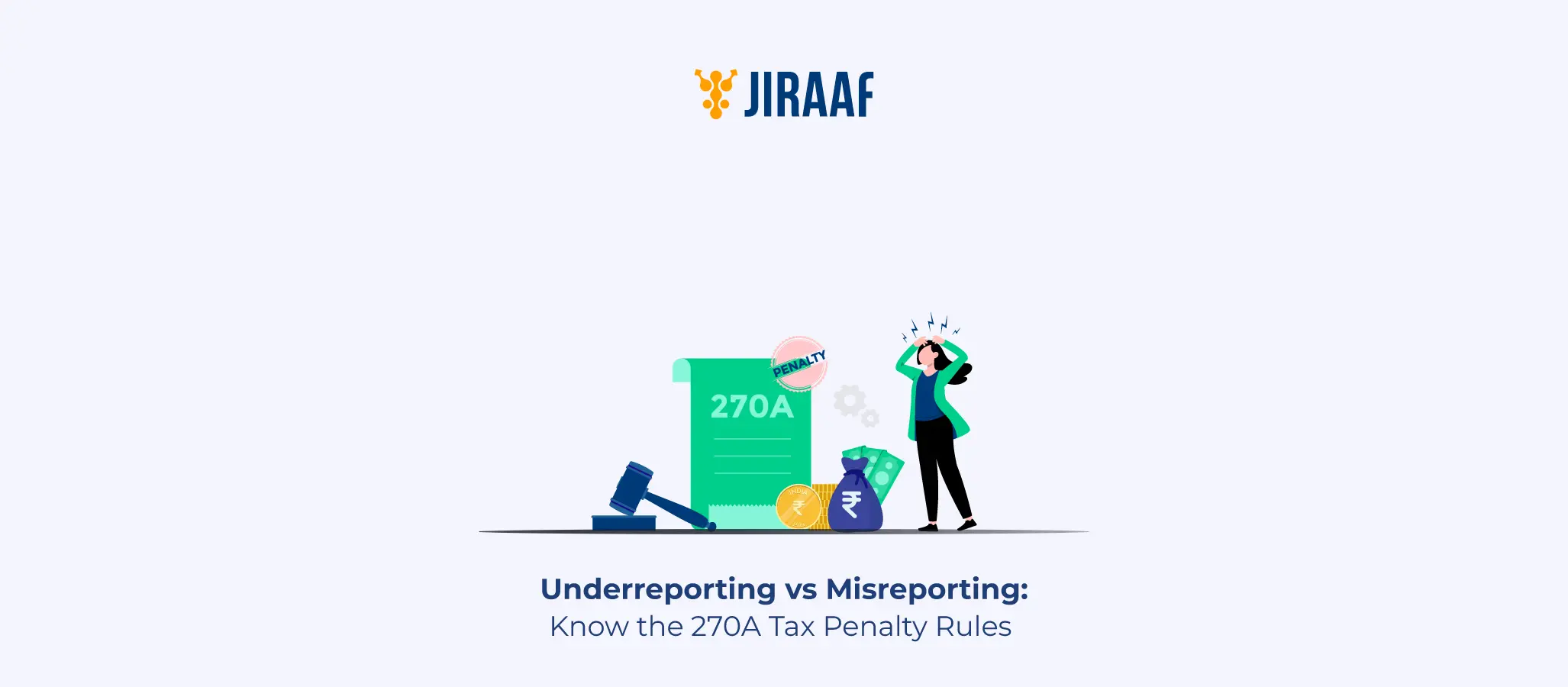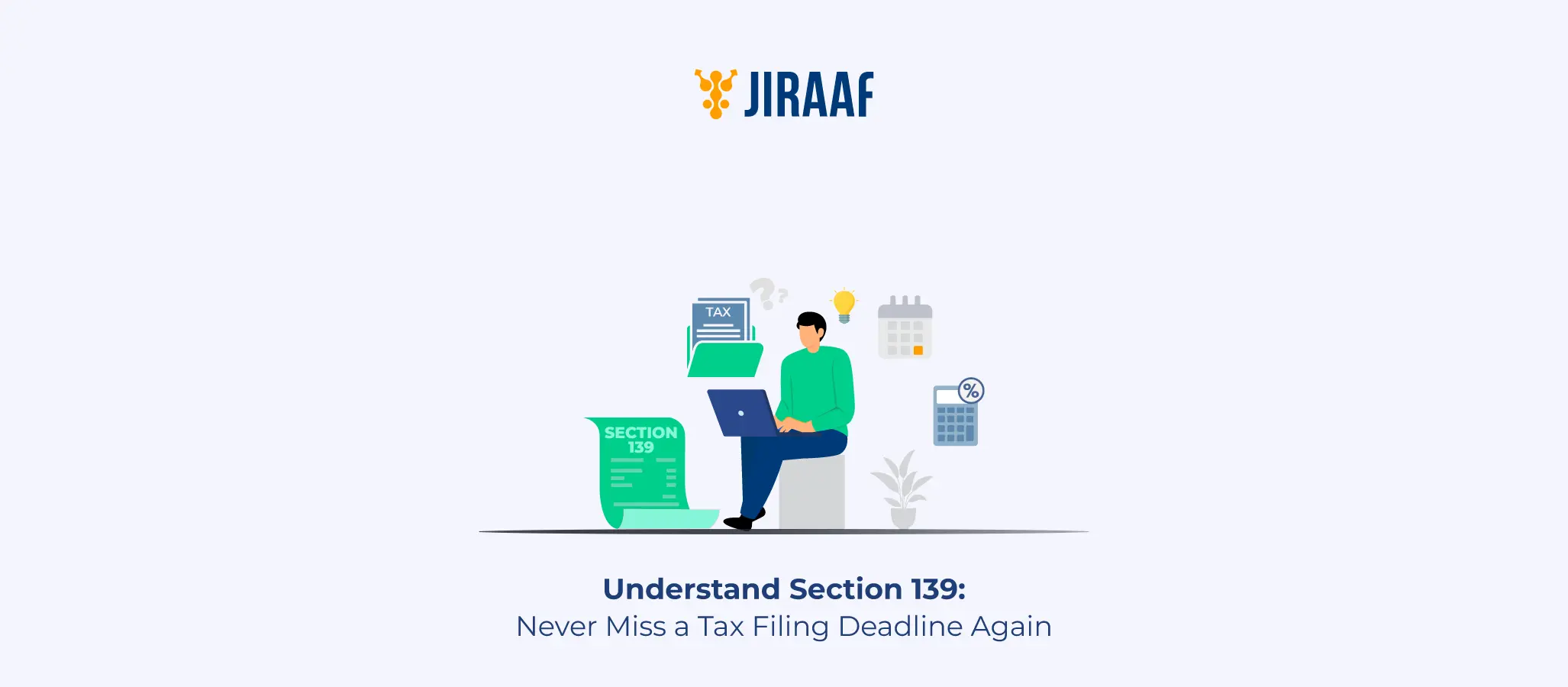Most people feel confused while filing taxes, trying to make sense of all the sections and what they include, and navigating the maze while reducing the overall tax burden. Now, what if we told you that there is one section, hiding in plain sight, that can trim down your taxes without any additional paperwork or investment?
That’s exactly what Section 87A of the Income Tax Act offers.
In this guide, you’ll learn everything about the Section 87A rebate—what it is, how much you can save with it, who qualifies, and how to actually claim it while filing your Income Tax Return (ITR). Whether you follow the old or new tax regime, we’ll break down the rules (and the math) so that you can make the most of this underrated benefit in FY 2025–26. Let’s get right into it.
What is Rebate Under Section 87A?
Section 87A is a provision in the Income Tax Act that allows resident individuals with lower total taxable incomes (₹7 lakh under the new tax regime and ₹5 lakh under the old regime) to claim a rebate (or refund) on their tax liability. Think of it as a final adjustment on your tax bill—if your taxable income is within a certain threshold, the government lets you reduce your tax payment, up to a certain limit.
The main purpose of Section 87A is to provide tax relief to low-income earners so they don’t feel the full weight of income tax. It’s designed to ensure that those earning modest incomes can still enjoy some breathing room after deductions and taxes are applied.
Eligibility for 87A Rebate in FY 2025–26
The eligibility rules for claiming the rebate under Section 87A are straightforward, but they differ slightly depending on which tax regime you’ve opted for.
Here’s what you need to qualify:
- You must be an individual resident of India (Hindu Undivided Families, companies, and firms are not eligible).
- Your total taxable income after deductions should not exceed the prescribed threshold.
For FY 2025–26:
| Tax Regime | Taxable Income Limit | Max Rebate Under 87A |
| Old Regime | Up to ₹5,00,000 | ₹12,500 |
| New Regime | Up to ₹7,00,000 | ₹25,000 |
So yes, the Section 87A rebate is available under both regimes, but the limit and benefit amount are higher under the new regime.
Important: This rebate is applied after calculating your total tax liability but before adding cess.
How Much Rebate Can You Claim Under 87A?
An Example Tax Calculation
Let’s break this down with an example.
Example 1 – Under Old Tax Regime
- Total taxable income: ₹4,80,000
- Tax on income: ₹12,500 (as per old slab rates)
- Rebate under 87A: ₹12,500
- Final tax payable: ₹0
Example 2 – Under New Tax Regime
- Total taxable income: ₹6,80,000
- Tax on income: ₹25,000 (as per new slab rates)
- Rebate under 87A: ₹25,000
- Final tax payable: ₹0
That’s how impactful this rebate is—it can bring your final tax liability to zero if you fall within the prescribed income bracket.
How to Claim 87A Rebate in ITR
Claiming the 87A rebate is pretty seamless—if you’re using income tax software or the online portal, it usually calculates it for you automatically.
But here’s how you can do it manually:
- Head to the ‘Tax Computation’ section of your ITR form.
- After computing your total tax (based on slab), you’ll see a field labeled ‘Rebate under Section 87A’.
- Enter the eligible rebate amount here (up to ₹12,500 or ₹25,000, depending on your regime).
Use ITR-1 if your income is from salary, pension, or one house property and you’re not carrying forward losses. Use ITR-2 if you also have capital gains or more complex income sources.
Common Mistakes to Avoid During the Process
- Choosing the wrong ITR form: This can delay processing or lead to a defective return notice.
- Not calculating taxable income properly: Especially if you’re near the threshold limit, minor errors can disqualify your rebate.
- Ignoring regime selection: If you don’t explicitly choose the new regime (Form 10IEA), you’ll default to the old one.
- Assuming automatic rebate: Always verify the final tax summary to confirm that the rebate has been applied.
Section 87A vs Other Deductions like 80C
Rebate vs Deduction —What’s the Difference?
Let’s clear up a common confusion.
- Deductions (like 80C) are subtracted from your gross total income to arrive at your taxable income.
- Rebates (like 87A) are subtracted from your tax liability, not your income.
So, deductions help lower your income, while rebates help lower your tax payable.
Can You Claim Both?
Absolutely! You can claim deductions like 80C (up to ₹1.5 lakh) and then still claim the rebate under 87A—if your final taxable income (after all deductions) stays within the 87A threshold.
In fact, claiming 80C deductions might help you reduce your taxable income enough to become eligible for the 87A rebate. Smart planning, right?
87A Rebate in Old vs New Tax Regime
This is where it gets strategic. The new regime offers a higher 87A rebate but fewer deductions. The old regime offers more deductions but a lower 87A threshold.
Let’s compare with an example:
Old Regime
- Salary: ₹8,00,000
- Deductions (80C, 80D, HRA): ₹3,00,000
- Taxable income: ₹5,00,000
This makes you eligible for ₹12,500 rebate under the old tax regime!
New Regime
- Salary: ₹8,00,000
- No deductions allowed
- Taxable income: ₹8,00,000 ✗
Unfortunately, you do not meet the eligibility criteria for 87A rebate in this scenario.
Now reverse it—say you have no deductions to claim:
- Old Regime: You pay tax on the full amount
- New Regime: If income is ₹7,00,000 or less, you get a ₹25,000 rebate
So, your decision depends on whether deductions can lower your taxable income below the 87A threshold. Run the numbers or use a tax calculator before you lock in your choice.
Final Thoughts
Section 87A is one of those tax hacks that can make a real difference—especially if you’re hovering around the 5–7 lakh income range. It’s automatic, hassle-free, and designed to reward modest earners who manage their income smartly.
Whether you’re in the old regime, loading up on deductions, or opting for the simplified new regime, this rebate can bring your tax liability all the way down to zero—if you qualify.
So, here’s your move: Review your income, tally your deductions, and make sure you don’t miss out on this perfectly legal tax relief. After all, it’s not just about saving money—it’s about making your money work smarter for you.
Want a quick win in your tax filing this year? Start by checking if you’re eligible for Section 87A.
FAQs
How much tax rebate can be claimed under Section 87A?
Under Section 87A, you can claim a tax rebate of up to ₹12,500 if your total taxable income is up to ₹5 lakh under the old tax regime, and up to ₹25,000 if your income is up to ₹7 lakh under the new tax regime in FY 2025–26.
Can I claim both Section 87A rebate and 80C deductions?
Yes, you can claim both. Section 80C offers deductions for specific investments and expenses, while Section 87A provides a rebate on your final tax liability if your total income is within the eligible limit. Claim 80C first to reduce taxable income, then apply the 87A rebate.
Is Section 87A rebate applicable to senior citizens?
Yes, resident senior citizens aged 60–80 qualify for the Section 87A rebate provided their total taxable income stays within the specified limit—₹5 lakh under the old regime or ₹7 lakh under the new regime in FY 2025–26. Super‑senior citizens (80+) are not eligible.
Is Section 87A rebate available under the new tax regime?
Yes, Section 87A rebate is available under the new tax regime for FY 2025–26. It applies to resident individuals with taxable income up to ₹12 lakh, offering a rebate of up to ₹60,000 that effectively reduces their tax to zero.
Discover fixed income investments with Jiraaf, a SEBI registered online bonds platform that educates and brings access to a wide array of bonds. Sign up today to explore diversified fixed income investment opportunities to support your goal-based wealth creation journey. Start investing!




